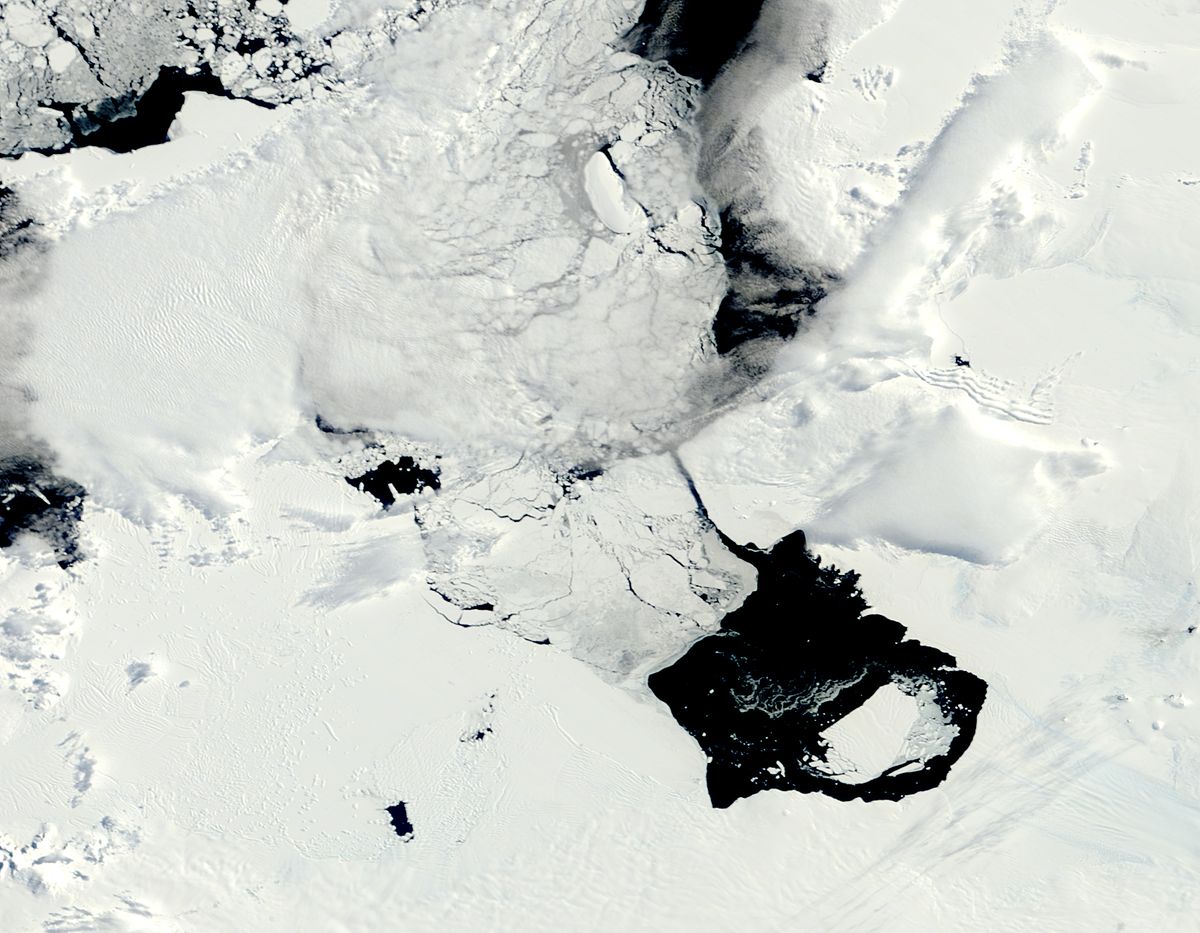
Huge Antarctic Iceberg Drifts Out to Sea (Time-Lapse Video)

A huge iceberg that broke off of Antarctica's Pine Island Glacier is heading toward the Southern Ocean, satellite images show.
Between November 2013 and March 2014, the Moderate Resolution Imaging Spectroradiometer (MODIS) — an instrument on NASA's Terra and Aqua satellites — tracked the massive iceberg as it drifted across Pine Island Bay in the Amundsen Sea. A time-lapse video also shows the motion of the ice island.
Scientists are now monitoring the area surrounding the big 'berg. Icebergs from Antarctica can move north and threaten southern shipping lanes.
"The iceberg got out beyond the bay, and looks like it's heading out into the Southern Ocean at the moment," Grant Bigg, of the University of Sheffield in the United Kingdom, told Live Science. "It's just at the cusp point to see whether it's a shipping hazard." [Gargantuan Iceberg - 8X Manhattan-Size – Has Left Glacier I Time-Lapse Video]
As of April 11, 2014, the iceberg — now called B31 — measured 18 by 11 nautical miles (21 by 13 miles, or 33 by 20 kilometers), the U.S. National Ice Center reported. The island "has remained pretty much the same shape since early December and is still about six times the size of Manhattan," Bigg told NASA's Earth Observatory.
Bigg's research team has been using synthetic aperture radar and visible satellite imagery to track the ice island and model its motion.
"It has been surprising how there have been periods of almost no motion, interspersed with rapid flow," Bigg told NASA. "There were a couple of occasions early on when there might have been partial grounding or collisions with the seafloor, as B31 bounced from one side of the bay to the other."
Sign up for the Live Science daily newsletter now
Get the world’s most fascinating discoveries delivered straight to your inbox.
Researchers are still trying to figure out why the giant ice chunk calved from Pine Island Glacier, according to NASA's Earth Observatory. Scientists have been particularly interested in Pine Island Glacier in the past two decades because it has become thinner and has been draining quickly and, therefore, has contributed significantly to sea level rise.
Follow Agata Blaszczak-Boxe on Twitter. Follow Our Amazing Planet @OAPlanet, Facebook and Google+. Original article on Live Science's Our Amazing Planet.












